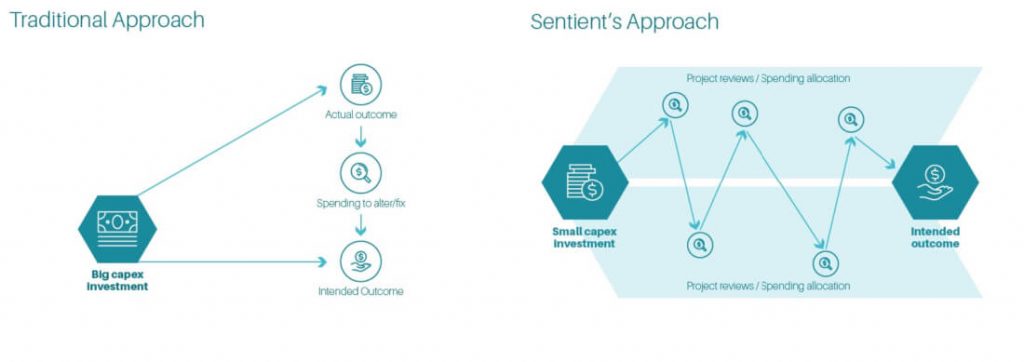Starting a new project may be daunting, especially when it involves implementing new technology.
But there is an innovator friendly way: small goals with small(er) budgets from the outset.
The resource sector’s road to improvement has been littered with large-scale projects that promised innovative and disruptive solutions. Instead, they delivered massive cost over runs and misalignment between customer and/or vendor outcomes.
Part of the problem could be attributed to the ever-accelerating advances in technology. Using the traditional process of scoping, tendering, developing, testing and deployment, just takes too long and leads us down the rabbit hole of progressing a cumbersome project which is sometimes considered too big to fail. Tarnishing our industry with yet another well reported, unsustainable white elephant.
At Sentient, we strive to address this by engaging our customers in small pieces of work aimed at key points, and then carefully evaluating the next steps. It is not an exact science and we frequently end up with no path forward. Many may see this as a failure, but in fact it’s part of the evolutionary journey towards the optimal outcome which, as a characteristic of its success, prevents the rabbit hole scenario described above.
The trick is to establish mutual trust and a collaborative dialogue with customers about what may be the next module for development. The benefit to the company must be significantly greater than the cost. It’s important that we sustain this conversation with the aim that these solutions end up being critical applications for our customer – but that should not be the outright goal.
Using VR and visualisation as example of this approach, we started developing basic 3D fly throughs for a local Tier 1 organisation. The next step was developing simple interactive training material, followed by complex assessments using random based immersive simulations. Our credibility from these projects, gave the customer confidence to continue to engage us during recent tough times, including an extremely intricate task management system.
Interestingly, we grossed more than 7 figures during this collaborative period and had we tried to perform this work in the traditional way, I am almost certain we would have ended up down the rabbit hole in what would have been a failure for both us and the client.
In summary, while it may be enticing to allocate a big budget to a project you hope will drastically improve the way you do things, think twice before sinking money into it. As the diagrams above show, this approach typically ends up with an outcome which is off the mark and requires additional investment before it works effectively, if you can even get it to this point.
Alternatively, an approach which is iterative and founded on smaller bite-size improvements can, in the long run, have the disruptive impact you hoped for but with less money, stress and failure.


